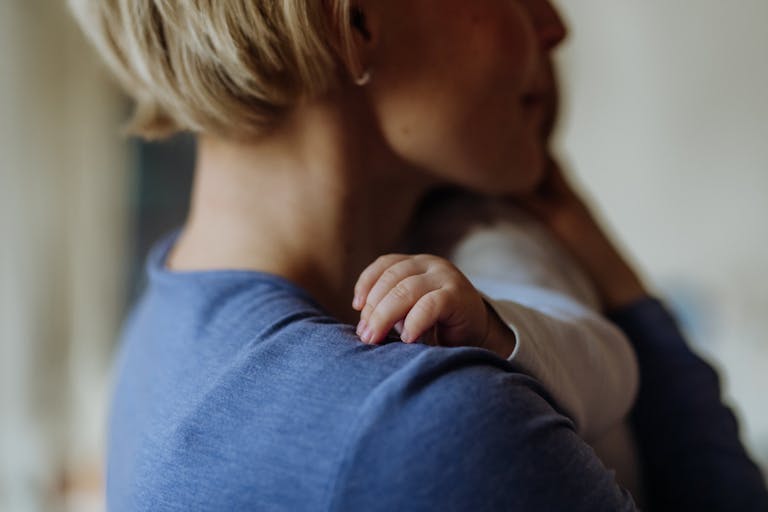
UK report: Sex-selective abortions spark concerns
Nancy Flanders
·
Analysis·By Anne Marie Williams, RN, BSN
What Denmark can teach us about reducing infant and maternal mortality
When it comes to abortion, Denmark is far from a model of pro-life policy — yet, the country still has something to teach the U.S. about caring for new mothers and their children, specifically in the areas of maternal and infant mortality.
Though Denmark does not uphold the right to life for preborn children, the country fares better than the U.S. when it comes to maternal and infant mortality rates; there are several reasons for this.
Denmark prioritizes a midwifery model of care over a medical model of care.
In Denmark, prenatal care is taxpayer-funded. In addition, more leave is available to new parents than that which is offered in the U.S. (Paid leave in Denmark varies according to employment.)
Mothers in Denmark receive frequent postpartum home visits from nurses to assess infant and mother health and breastfeeding concerns; this is very limited in the United States.
In June of this year, Denmark arbitrarily extended the gestational age limit for abortions from 12 weeks to 18 weeks. The country also holds the (dis)honor of having some of the lowest rates of individuals with Down syndrome in the world due to abortion.
In addition, its prime minister is pushing for the legalization of assisted suicide (which the country’s Ethics Council roundly rejected as recently as 2023).
However, there are things the country can teach us about reducing rates of maternal death during pregnancy and through the first year postpartum (maternal mortality) and to infant death up through the first year of life (infant mortality).
Denmark has a largely socialized medical system, which means that (despite other significant shortcomings of such systems) Danish health records tend to be comprehensive, accurate, and reflect large datasets.
The country's maternal mortality rate (4/100,000 live births) is more than four times lower than that of the U.S (17/100,000 live births, as of 2023). What’s more, Denmark's infant mortality rate (3/1,000 births) is more than 1.5 times lower than that of the U.S. (5.1/1,000 births as of 2023).
Here are the primary ways Danes do prenatal and postpartum care differently:
In Denmark, the midwifery model of care, not the medical model, is standard for low-risk pregnancies.
The midwifery model of care (used by Denmark)...
assumes that pregnancy is a natural biological process, usually manageable by trained midwives who take an approach of supporting labor and only medically intervening if necessary.
views medical intervention as the exception, not the rule.
The medical model of care...
tends to perceive pregnancy through a pathological lens, as inherently dangerous and often requiring medical intervention.
Which model a country prioritizes is not a matter of splitting philosophical hairs, nor is it as innocuous as different ice cream preferences; it has real life implications for women and their children.
Countries that center the midwifery model of care tend to have lower C-section rates, and — downstream of only performing medically necessary C-sections — lower maternal mortality rates.
Case in point, around 1 in 5 of births are via C-section in Denmark, compared to 1 in 3 births in the U.S.
In Denmark, prenatal visits — including ultrasounds, blood draws, and any other imaging — are free. Labor and birth care and postpartum checkups are also free.
Article continues below
Dear Reader,
In 2026, Live Action is heading straight where the battle is fiercest: college campuses.
We have a bold initiative to establish 100 Live Action campus chapters within the next year, and your partnership will make it a success!
Your support today will help train and equip young leaders, bring Live Action’s educational content into academic environments, host on-campus events and debates, and empower students to challenge the pro-abortion status quo with truth and compassion.
Invest in pro-life grassroots outreach and cultural formation with your TRIPLED year-end gift!
Who foots the bill for these services? The government does, via the taxpayer-funded healthcare model (though a small private insurance sector does exist).
Discussing the pros vs cons of socialized vs privatized healthcare is beyond the scope of this article (though, of note, Denmark’s system may not work so well for those who need costly but potentially life-saving experimental drugs, as this Danish couple did for their young daughter), but under the country's system, prenatal and postpartum services are completely covered.
This is not the case in the U.S., where the average cost of an uncomplicated vaginal birth in 2020 was reportedly over $13,000 (before insurance has paid any amount). That cost, which bundles prenatal care and one postpartum visit with labor and delivery care, usually does not include ultrasounds, blood draws, etc.
Remarkably, Denmark offers parents a total of one year of combined parental leave.
Mothers are eligible to begin leave four weeks before the baby's due date and are guaranteed 14 weeks of leave after giving birth.
Fathers are eligible for two weeks of leave immediately following the birth.
The couple has 32 weeks of leave to split between them in whatever way is most appropriate for their family.
Couples who welcome more than one child are eligible for longer than 52 weeks total
Couples who grow their families through adoption are entitled to the same benefits, beginning the day they bring their new baby home.
However, not all of this time is paid. Paid time differs based on whether a parent is employed in the private or public sector.
In the U.S., the Family and Medical Leave Act (FMLA) provides for unpaid parental leave, but for far fewer weeks than that of Denmark.
Live Action News has previously discussed why paid family leave, particularly maternity leave, is a pro-life policy too important to ignore. In fact, according to a 2018 study, women who utilized paid maternity leave “experienced a 50% decline in the odds of having their infants hospitalized, having themselves hospitalized, as well as seeing a mental health provider.” Mental health is hugely important, as suicide and overdose are leading causes of maternal mortality in the year following birth, according to the CDC.
Perhaps most importantly, new mothers in Denmark are supported in meaningful ways after they have given birth. This differs from the U.S., where one perfunctory checkup at six weeks is the standard to greenlight a return to exercise and intimacy.
Tragically, the majority of maternal mortality cases occur before the six week mark.
In Denmark, new mothers receive repeated home visits from trained nurses (New Jersey recently began implementing a similar initiative), who assess the baby’s vital signs and the mother’s mental health, and troubleshoot breastfeeding concerns, among other things. Breastfeeding decreases the risk of sudden infant death syndrome (SIDS), one of the top causes of infant mortality.
Finally, new mothers in Denmark are automatically assigned to support groups with five or six other women local to their area. These groups indirectly work to drive down maternal and infant mortality through the power of “social connection as medicine.”
Certainly, the United States, as a “melting pot” of many races and cultures, is less homogenous than Denmark, and this has implications for maternal and infant mortality rates (black American mothers and babies, for instance, are far more likely than their white American or Asian American counterparts to die in the first year postpartum).
This makes implementing proven policies — including increasing access to midwifery care, doulas, paid parental leave, and earlier (and more frequent!) postpartum checkups — all the more urgent.
Live Action News is pro-life news and commentary from a pro-life perspective.
Contact editor@liveaction.org for questions, corrections, or if you are seeking permission to reprint any Live Action News content.
Guest Articles: To submit a guest article to Live Action News, email editor@liveaction.org with an attached Word document of 800-1000 words. Please also attach any photos relevant to your submission if applicable. If your submission is accepted for publication, you will be notified within three weeks. Guest articles are not compensated (see our Open License Agreement). Thank you for your interest in Live Action News!

Nancy Flanders
·
Analysis
Cassy Cooke
·
Analysis
Cassy Cooke
·
Analysis
Bridget Sielicki
·
Analysis
Cassy Cooke
·
Analysis
Cassy Cooke
·
Human Interest
Anne Marie Williams, RN, BSN
·
Issues
Anne Marie Williams, RN, BSN
·
Analysis
Anne Marie Williams, RN, BSN
·
Issues
Anne Marie Williams, RN, BSN
·
Analysis
Anne Marie Williams, RN, BSN
·